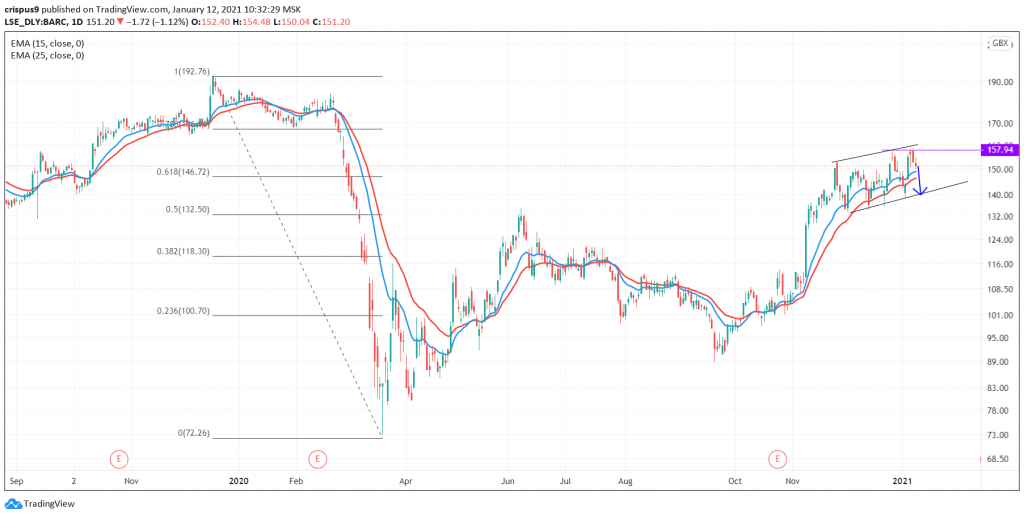- Summary:
- The daily chart shows that Barclays share price could fall by about 8% in the near term before bouncing back later this month
Barclays share price is under pressure as investors start pricing-in negative interest rates in the United Kingdom. BARC shares ended the day at 151p yesterday; its third consecutive day of losses. It has declined by more than 5% in the past four days. Other UK banks like Lloyds, Standard Chartered, and NatWest have also been falling.
The background: Barclays is a London-headquartered bank with operations globally. The company operates through its UK and international segments. In the UK, it serves customers by providing loans and credit cards.
Its Barclay Card is the biggest credit card brand in the country. Its international business includes its trading business, which helped cushion it from substantial losses last year.
What’s happening: There are two main catalysts pulling Barclays share price lower. First, while the UK and the EU reached a Brexit agreement, they left the vital financial services agreements segments open. They aim to reach an agreement by March this year. Therefore, investors are possibly worried about any delays and disagreements.
Second, BARC shares are falling because of the rising possibility of low-interest rates in the near term. That’s because the UK economy is moving from bad to worse because of the coronavirus pandemic. Negative rates would “eat” the already-narrow margins of the bank.
Barclays share price forecast
Baclays stock is trading at 151p, which is slightly below this month’s high of 157.95p. On the daily chart, the price has formed a double top pattern, which is said to be bearish in nature. The price still remains slightly above the 25-day and 50-day exponential moving averages and the 61.8% Fibonacci retracement.
Therefore, while the overall trend is bullish, there’s a possibility that it will fall to the lower side of the ascending channel at 140p, which is 8% below the current price.
BARC share price chart


